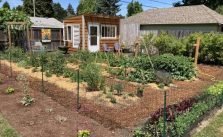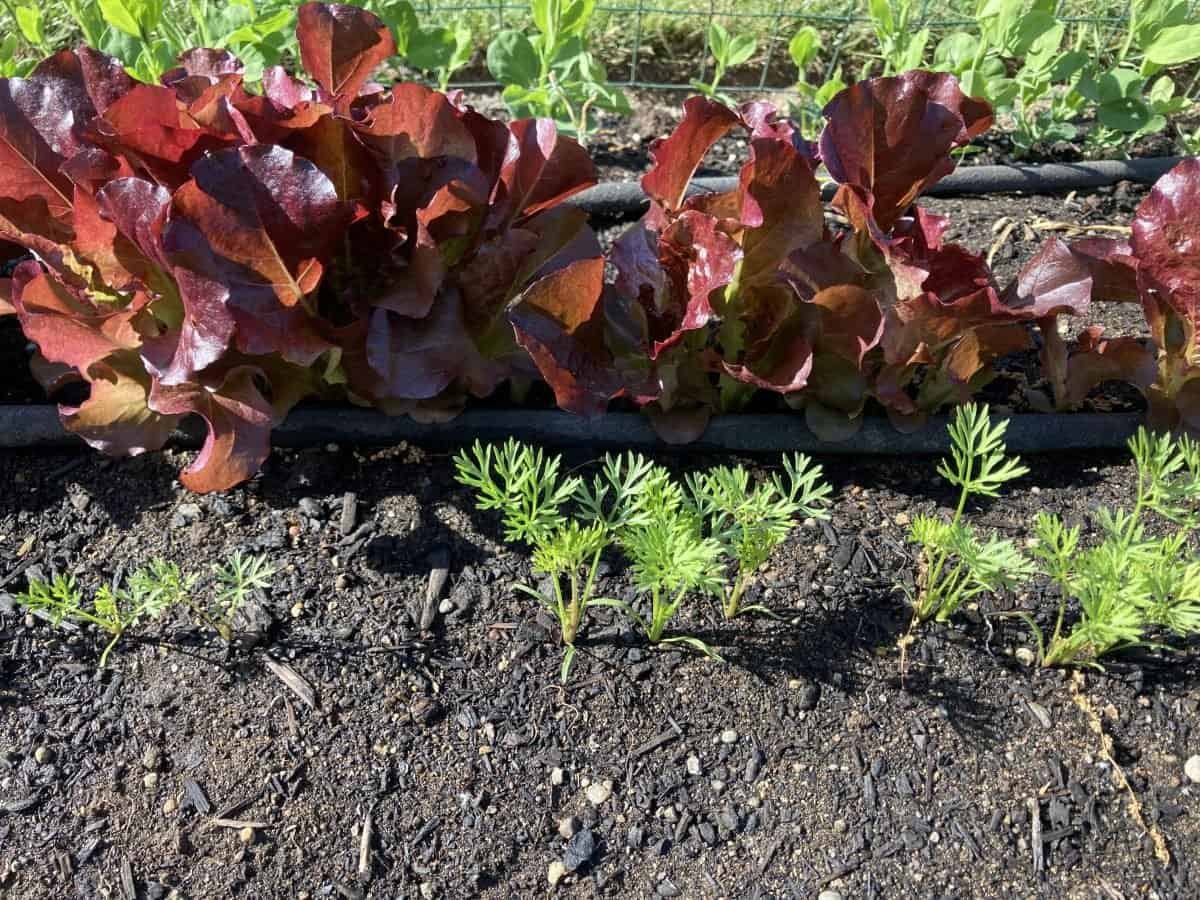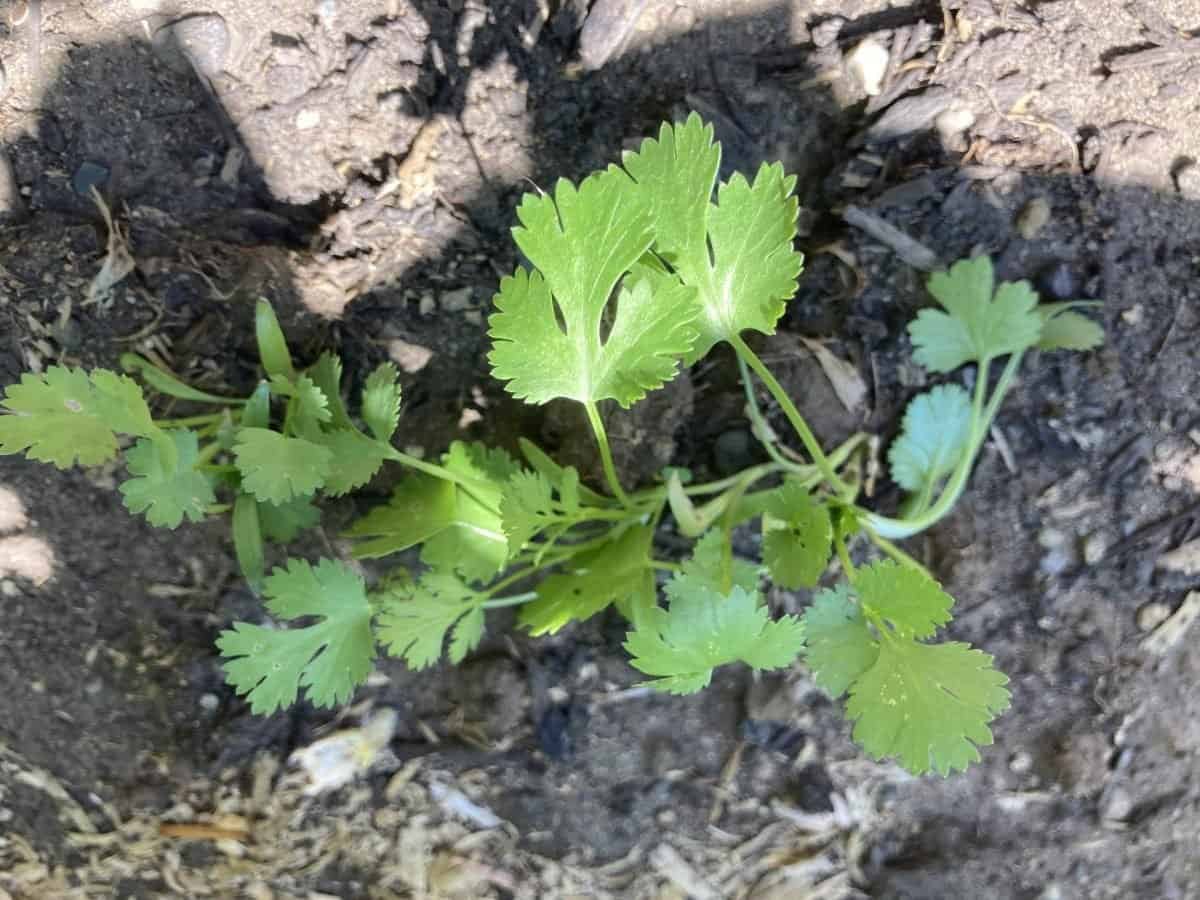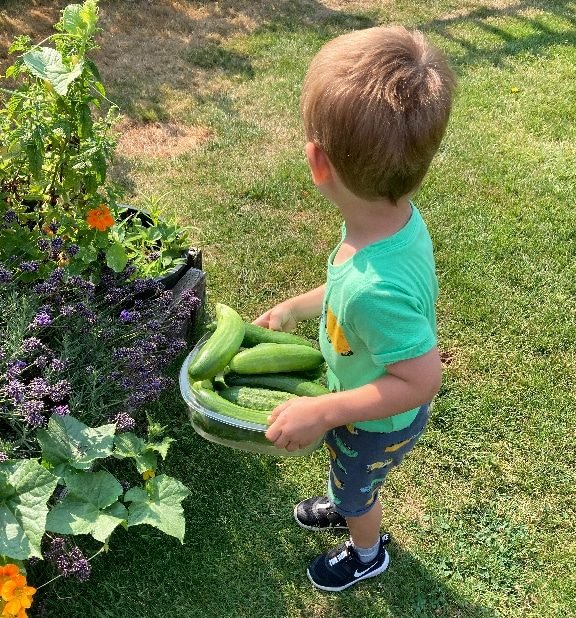Tips and tricks to help you grow a vegetable garden and flower garden
In this post, I will share some of my favorite Vegetable Gardening Tips and Tricks to help you to grow the best garden possible producing an abundance of vegetables and flowers.
Tip & Trick #1
When planting tomatoes you need to bury the tomato plant 2/3 rds of the way. To do this remove the leaves along the main stem where it will be buried. You can either lay the plant in a trough burying the plant or dig a deep hole to cover the plant, leaving only 1/3 of the plant above ground.
The reason for doing this is all of those hair-like roots along the main stem once buried will root and provide you a strong healthy plant structure that will produce a plant that will produce more tomatoes. Strong root development will promote a strong plant that will fight diseases, promote more tomatoes, and will need less watering.

Tomatoes need a strong root structure to grow a strong plant that produces lots of fruit.
Be sure you add an organic mulch that will help retain moisture for the root system and prevent weeds from growing.
Tip & Trick #2
If you live in a cooler climate and want to grow vegetables that prefer a warmer climate you can do 3 things that will allow you to grow vegetables like Egg Plants, Sweet Potatoes, and Okra plants.
The first thing to do is use plastic or a weed barrier on the ground to heat up the soil and to keep it warmer. Prepare the bed as early as possible in the Spring and cover the area with the plastic or weed barrier to heat the soil up even before you plant exposing the area to long periods of direct sunlight.
The second step to take is to select a south-facing area that will receive the most sun possible.
The last way to enhance the vegetables you grow is to cover the growing bed with a portable greenhouse, row cover, or hoop house so that you can increase the temperature where you are planting (This can increase the temperatures by 10 degrees) allowing you to plant earlier in the Spring and raise the temperatures needed to grow some of these plants.
Tip & Trick #3
If you like to grow lots of Basil you can grow as many plants as you want from 1 plant by propagating. All you need to do is take cuttings off your plant and place them in a cup of water until they sprout a strong root structure.
Another great way to take advantage of being able to propagate basil is to get a few friends to buy a different variety of basil so that you can all share by propagating and sharing them with each other.
Another suggestion to keep your basil growing all year long is to take cuttings for propagating in late summer to propagate and bring them indoors over the winter for use and for new plants in the next Spring.
Basil is a great companion plant that is great to plant around your fresh vegetable plants like tomatoes.
Tip & Trick #4
If you love growing Cilantro but you are tired of growing it to only see your Cilantro bolt I have a great solution. I have grown my best Cilantro by planting seeds in late Summer so that the plant can grow all winter and Spring producing a huge crop and you never have to worry about it bolting due to hot summer days.
Cilantro can withstand cold temperatures into the mid 20’s and if you cover with frost cover it can even withstand temperatures into the teens.
One way to help your winter crops is by using a cold frame for some of your cool-season crops.
I have grown a plant that was 2-3 feet tall and wide that grew all Winter and Spring.
Tip & Trick #5
To grow bushy Pepper plants that produce more peppers 3 tips will help you grow them.
The first tip is to prune the top of plant once the plant has 6-10 main leaves so that the plant will send out more growth producing a stronger plant that will produce more peppers.
When the plant is just ready to start setting on buds you can spray the plant with an aspirin spray which tricks the plant to send energy to set on more buds and fruit.
Peppers need 8 hours of sun but do not like the heat of the late afternoon sun, so it is best to plant taller plants on the west side of the vegetable beds to shade your peppers.
Tip & Trick #6
To get your vegetable plants pollinated when bees and other pollinators are not as active in early Spring you can become the pollinator with a Q-tip or small paintbrush in hand.
You can pollinate all of your vegetable plants by taking the instrument (Q-tip, Paintbrush) and brushing across the blossoms sharing the pollen from one bud to another.
Another way to help the plant pollinate is to lightly shake the plant simulating the wind moving the plant to assist in pollinating.
By taking these steps you can improve the crop you are getting to increase pollination.
Tip & Trick #7
One of the greatest tips to use for all of your vegetable plants I strongly suggest you apply a layer of mulch in your vegetable beds around all of your vegetables, by doing this you will reduce how much water per week is needed for your plants.
Mulch can be many things, including wood chips such as pine or cedar shavings. Ground-up leaves and other yard debris can be used (be careful to only use grass clippings when mixed with leaves). Larger wood chips can also be used to protect the plants.
By using mulch you will allow the water to be retained by the plant’s roots. Also, the application of mulch will prevent weed seeds from germinating and growing in your garden.
Tip & Trick #8
Here is a trick to help you in your garden design to provide you with a productive garden that will maximize the space to produce more vegetables in small spaces.
If you grow your garden vertically not only can you increase the number of plants in your garden bed but you will reduce diseases and pest damage since the plants and fruit will grow off the ground.
Tip & Trick #9
To keep your pumpkins and squash from getting rotten spots where they come into contact with the ground you can slide a piece of wood under them to keep them from coming into contact with the ground.
I hope you try these vegetable gardening tips & tricks to help you improve your garden.
Please continue to come back to read more tips and tricks for gardening I will update the post with new tips and tricks as I learn more to help you.




